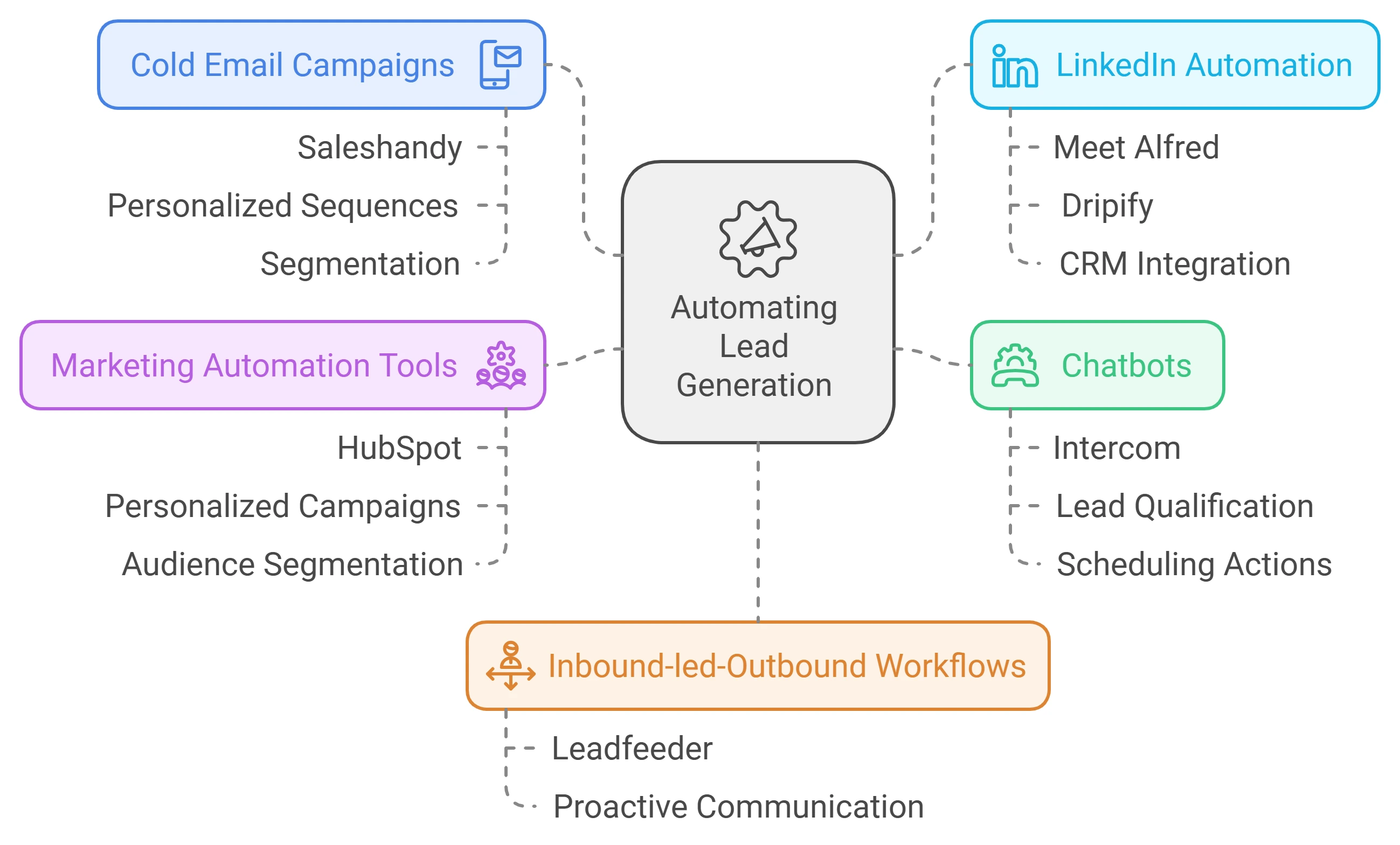How to Automate Lead Generation for B2B Sales Teams

In order to optimize efficiency, minimize manual labor, and elevate the quality of leads, it is imperative for B2B sales teams to automate lead generation. This guide will provide a comprehensive overview of the most effective strategies and tools for automating your lead generation process, thereby guaranteeing a consistent stream of qualified prospects.
Comprehending Lead Generation Automation
Lead generation automation is the utilization of software tools and technologies to expedite the process of identifying, attracting, and converting potential consumers. Sales teams can concentrate on cultivating relationships and concluding transactions by automating repetitive tasks.
Key Strategies for Automating Lead Generation

-
Automating Cold Email Campaigns
- Automate your unsolicited email outreach by utilizing tools such as Saleshandy. These platforms enable the development of personalized email sequences that can be distributed to numerous prospects simultaneously.
- Ensure that your messages are pertinent and tailored to your audience by segmenting them according to criteria such as industry, company size, or past interactions.
-
Engaging in LinkedIn Automation -
- Utilizing tools such as Meet Alfred or Dripify can assist in the automation of your LinkedIn outreach efforts. You can establish connections with potential clients, send personalized messages, and even follow up automatically in accordance with their engagement.
- Integrate these tools with LinkedIn Sales Navigator to import leads directly into your CRM for seamless administration.
-
Employing Chatbots
- Integrate chatbots into your website to interact with visitors in real time. Chatbots are capable of gathering contact information, qualifying leads according to predetermined criteria, and scheduling subsequent actions.
- Robust chatbot solutions that integrate with your CRM are available through platforms such as Intercom, which enable you to more effectively manage prospects.
-
Inbound-led-Outbound Workflows
- Develop a hybrid strategy that integrates outbound strategies (e.g., unsolicited emailing) with inbound marketing (e.g., content marketing, SEO). Utilize tools such as Leadfeeder to identify companies that are perusing your website and to engage in proactive communication.
- This workflow guarantees that you engage both passive visitors and active prospects, thereby increasing the likelihood of conversion.
-
Utilizing Marketing Automation Tools
- Utilize marketing automation platforms such as HubSpot to cultivate leads by sending personalized email campaigns that are tailored to their preferences and behaviors.
- These tools enable you to further segment your audience and provide personalized content that resonates with various consumer personas.
Selecting the Appropriate Tools for Lead Generation Automation
It is essential to choose the appropriate tools in order to achieve successful lead generation automation. The following platforms are suggested:
- Saleshandy: For the automation of unsolicited emails and the prospecting process.
- Leadfeeder: To integrate the data into your CRM and identify companies that are perusing your website.
- Intercom: For chatbot solutions that improve customer engagement.
- HubSpot: A comprehensive marketing automation tool that provides CRM integration, email marketing, and analytics.
Best Practices for Effective Automation
- Categorize Your Leads: Divide your leads into categories based on behavior or demographics. This enables more precise marketing initiatives and enhances conversion rates.
- Integrate Your Systems: Guarantee that all of your lead generation tools are integrated with your current systems (such as CRMs) to maintain a centralized database of prospects.
- Performance Monitoring: Conduct consistent evaluations of the effectiveness of your automated campaigns. Refine your strategies by utilizing metrics such as click-through rates, open rates, and conversion rates.
- Personalize Communication: Strive for personalization, even in automated processes. Utilize merge tags in emails to customize messages according to the interests of recipients and address them by name.
Conclusion
For B2B sales teams that are seeking to enhance efficiency and stimulate growth, automating lead generation is an effective approach. By employing the appropriate strategies and tools, it is possible to establish a streamlined process that not only increases the quantity of leads but also improves their quality. Transform your lead generation endeavors into a more productive and effective system by implementing these practices today.

